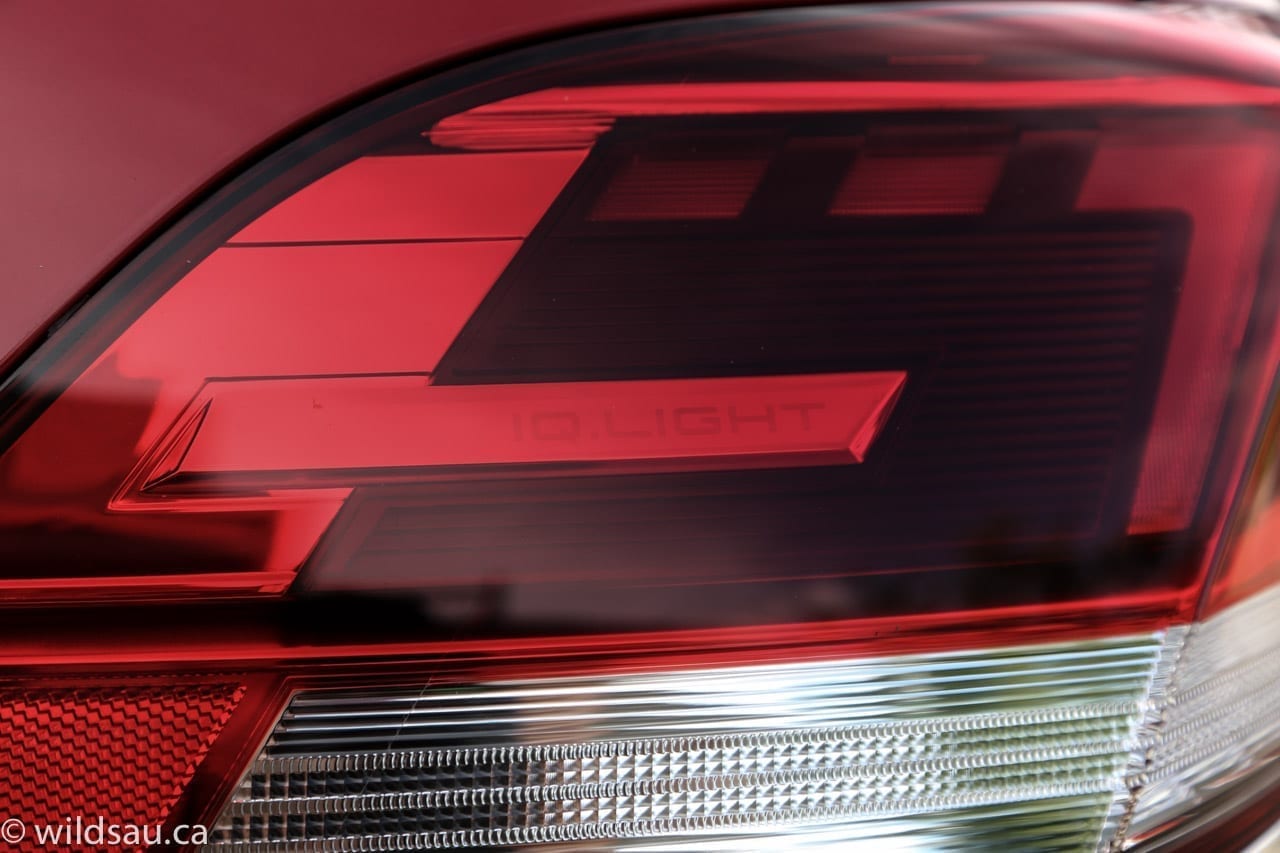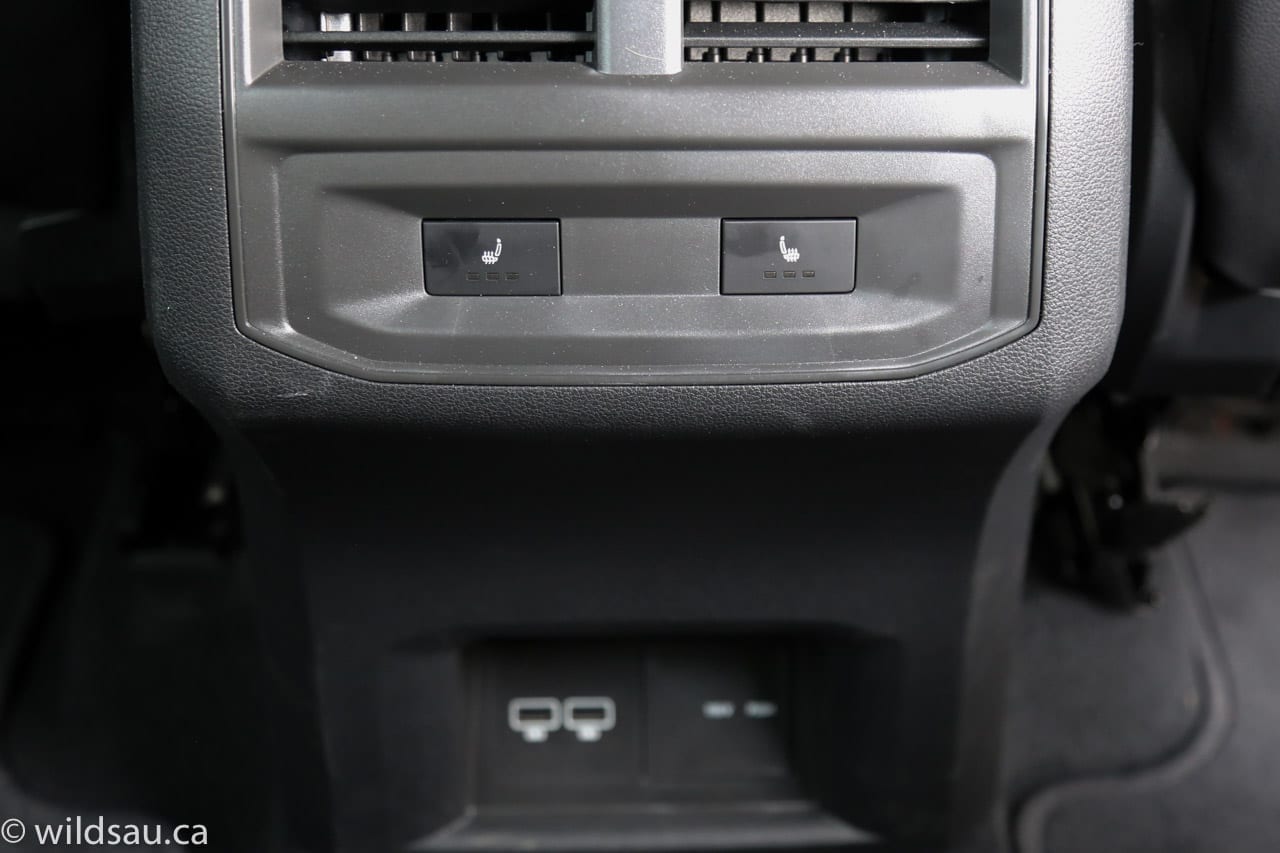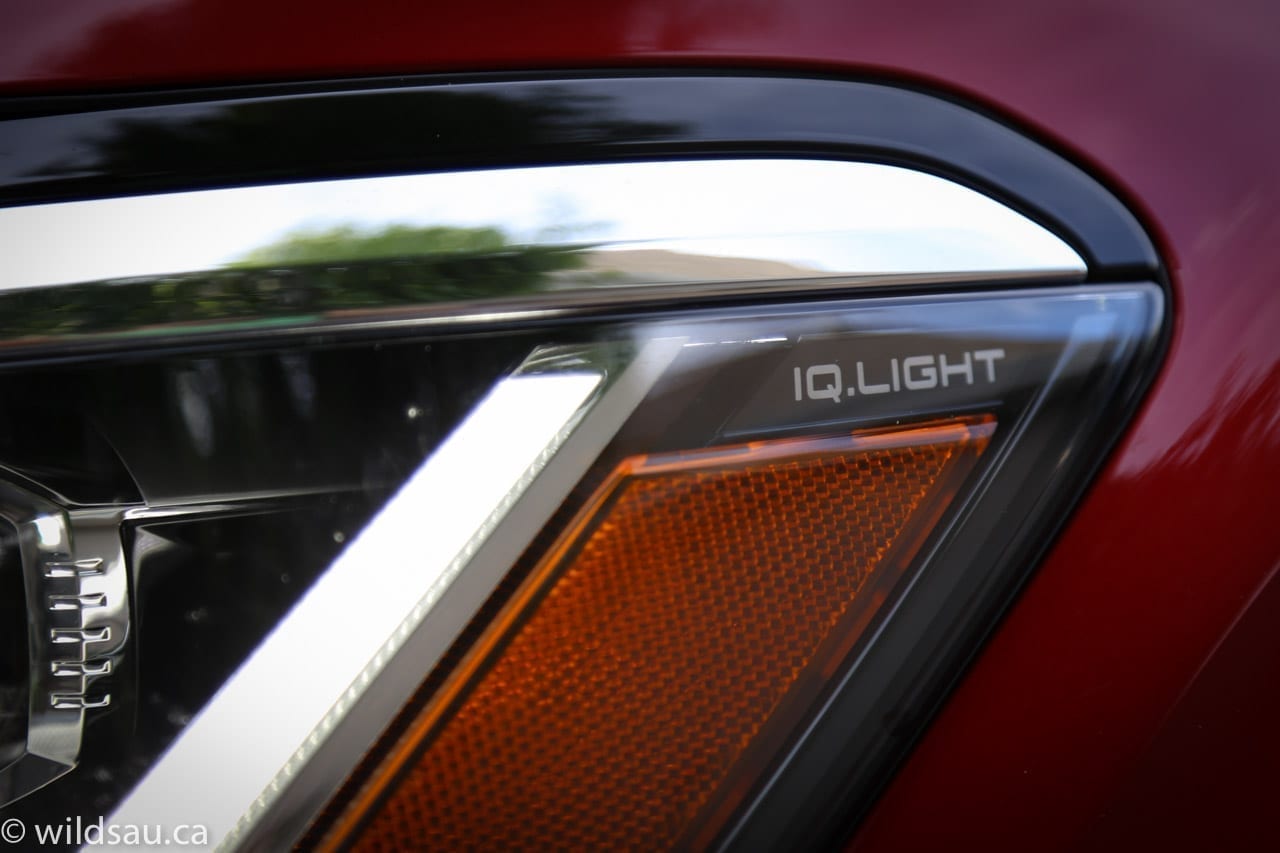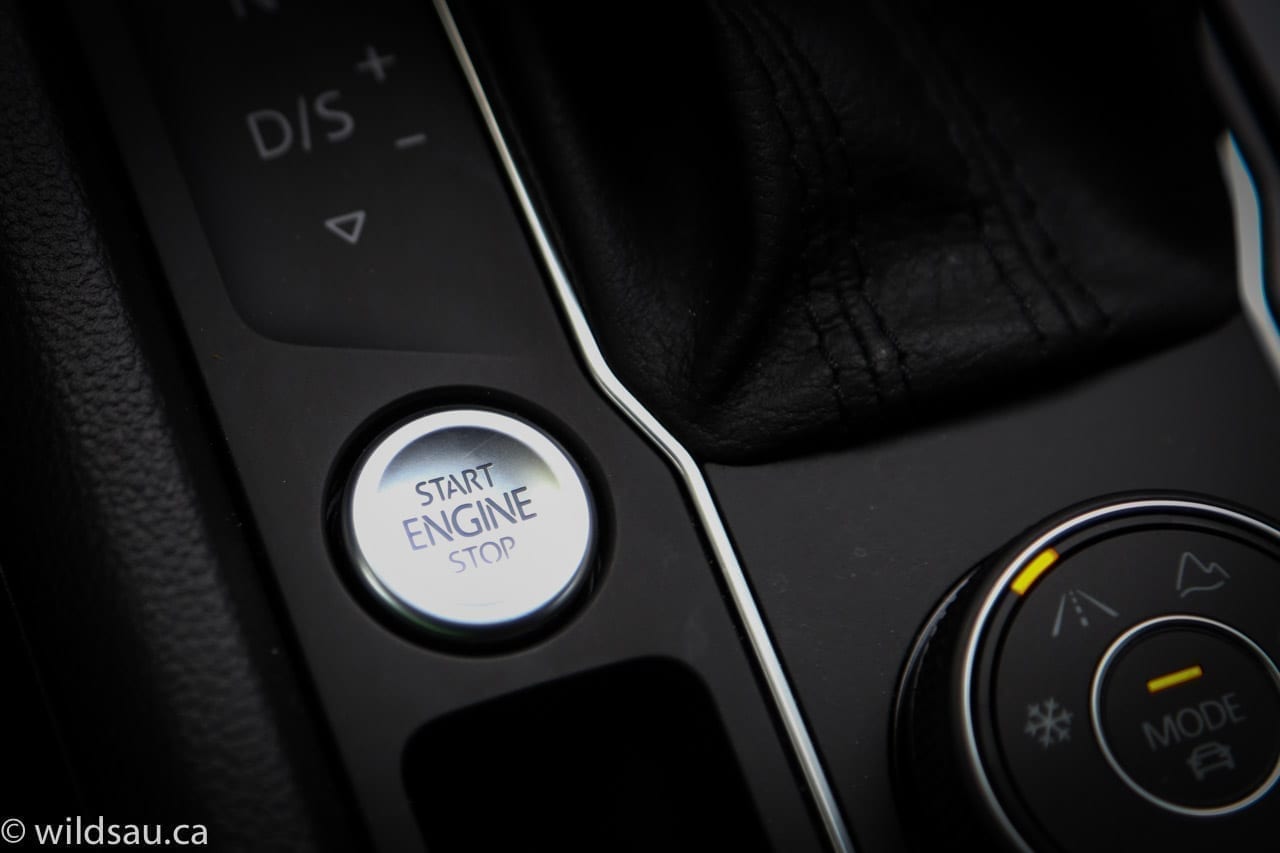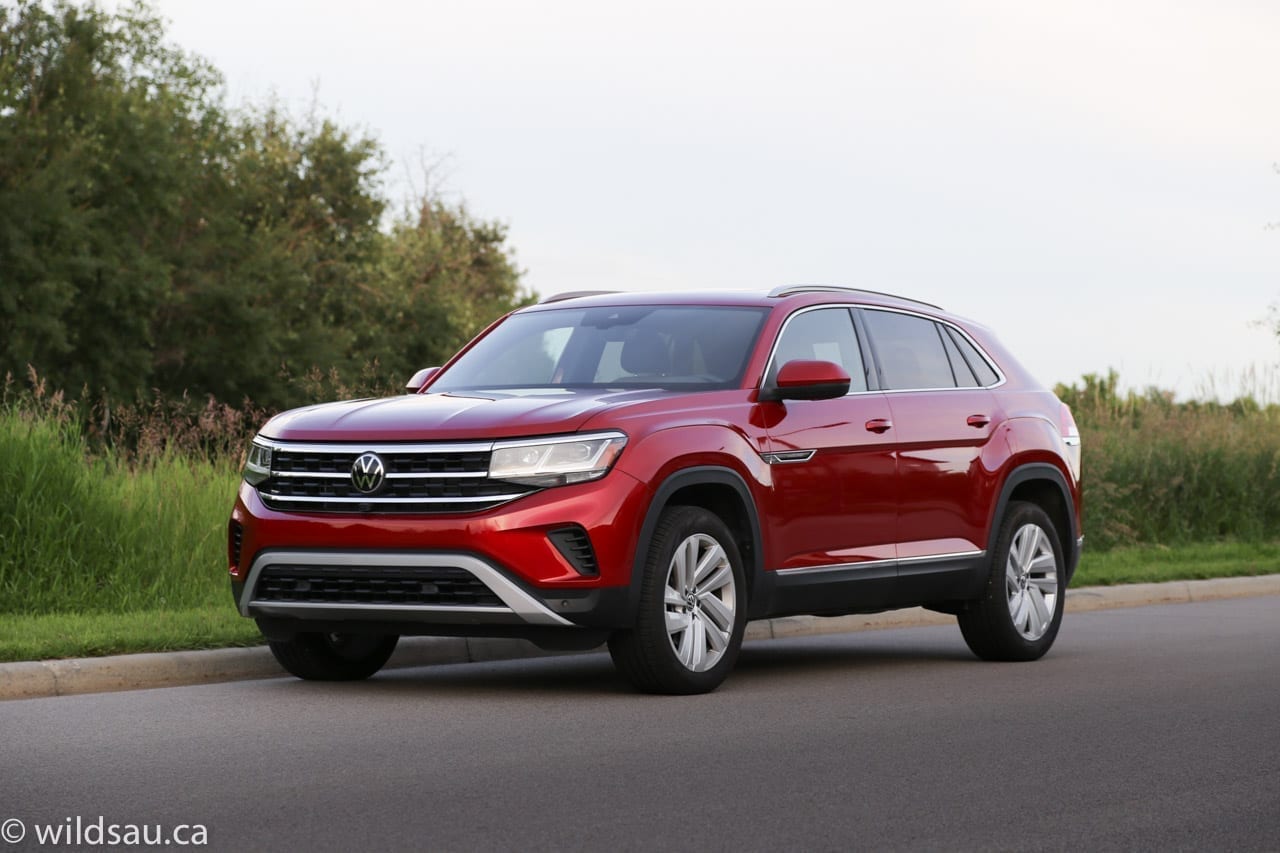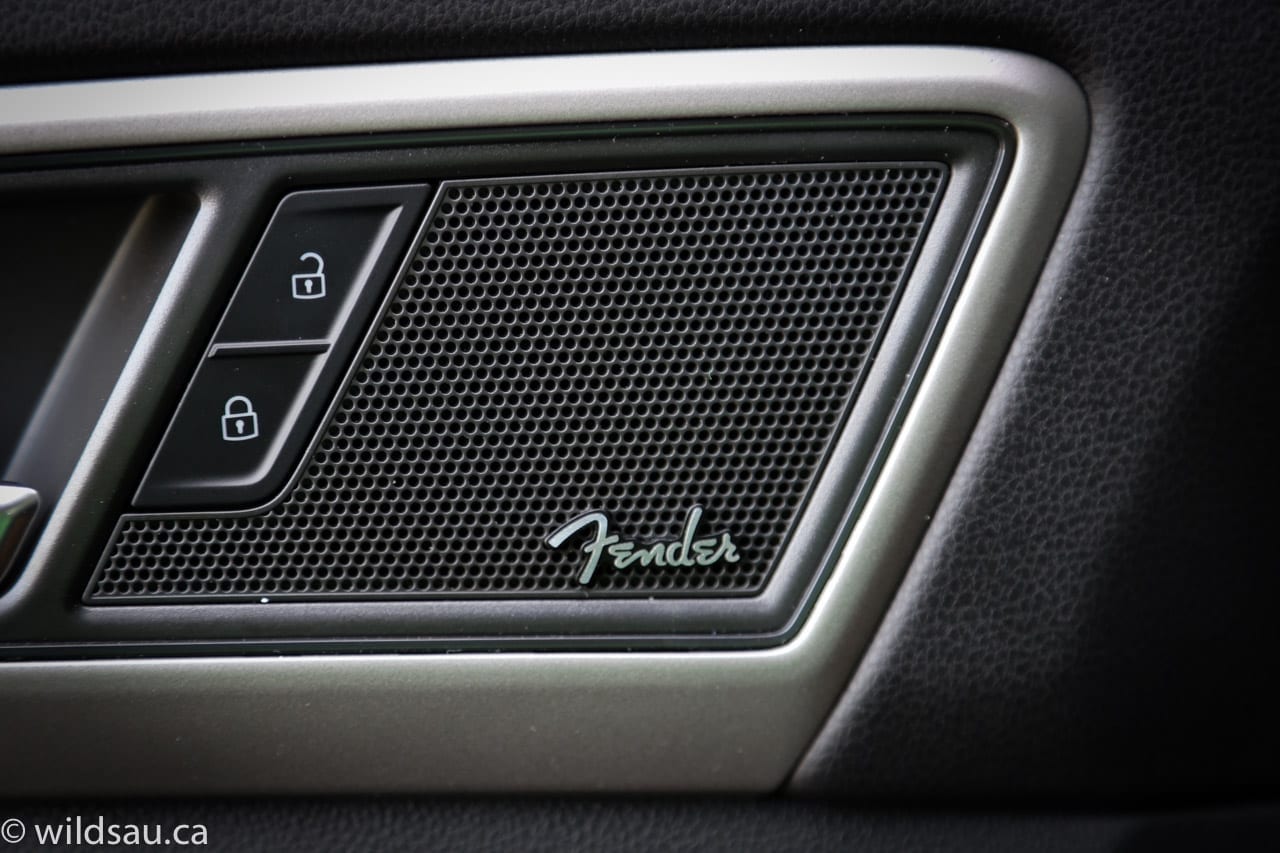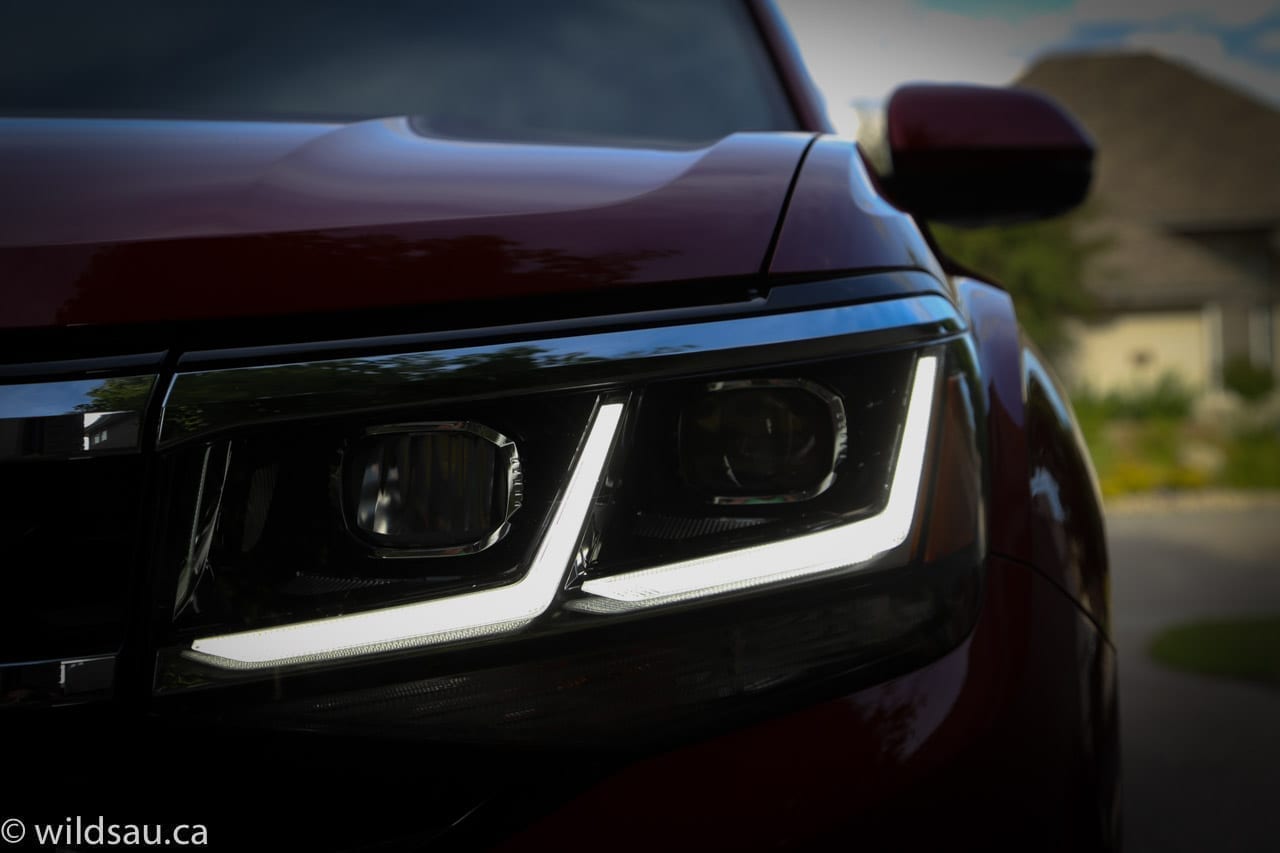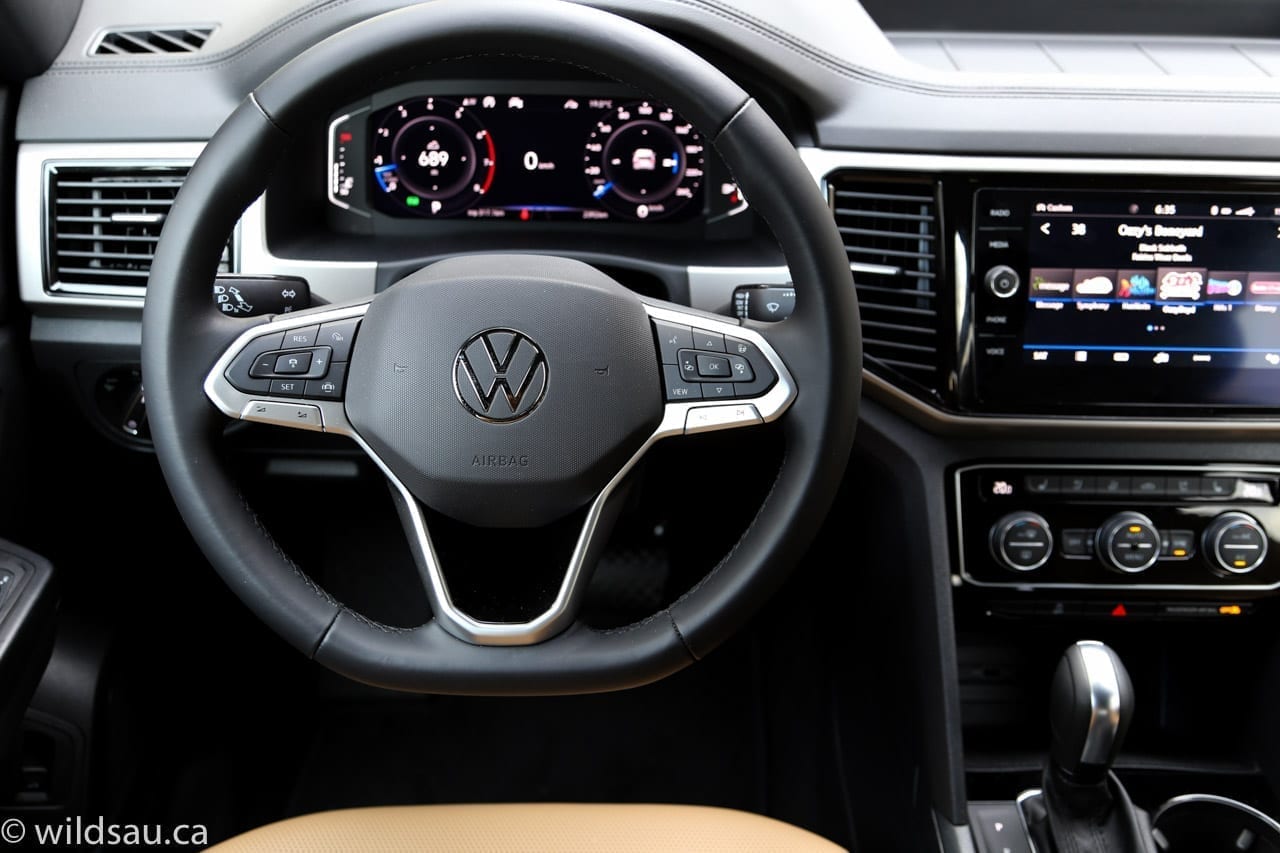The “sportier” brother of the Atlas has arrived.
Review and photos by Tom Sedens
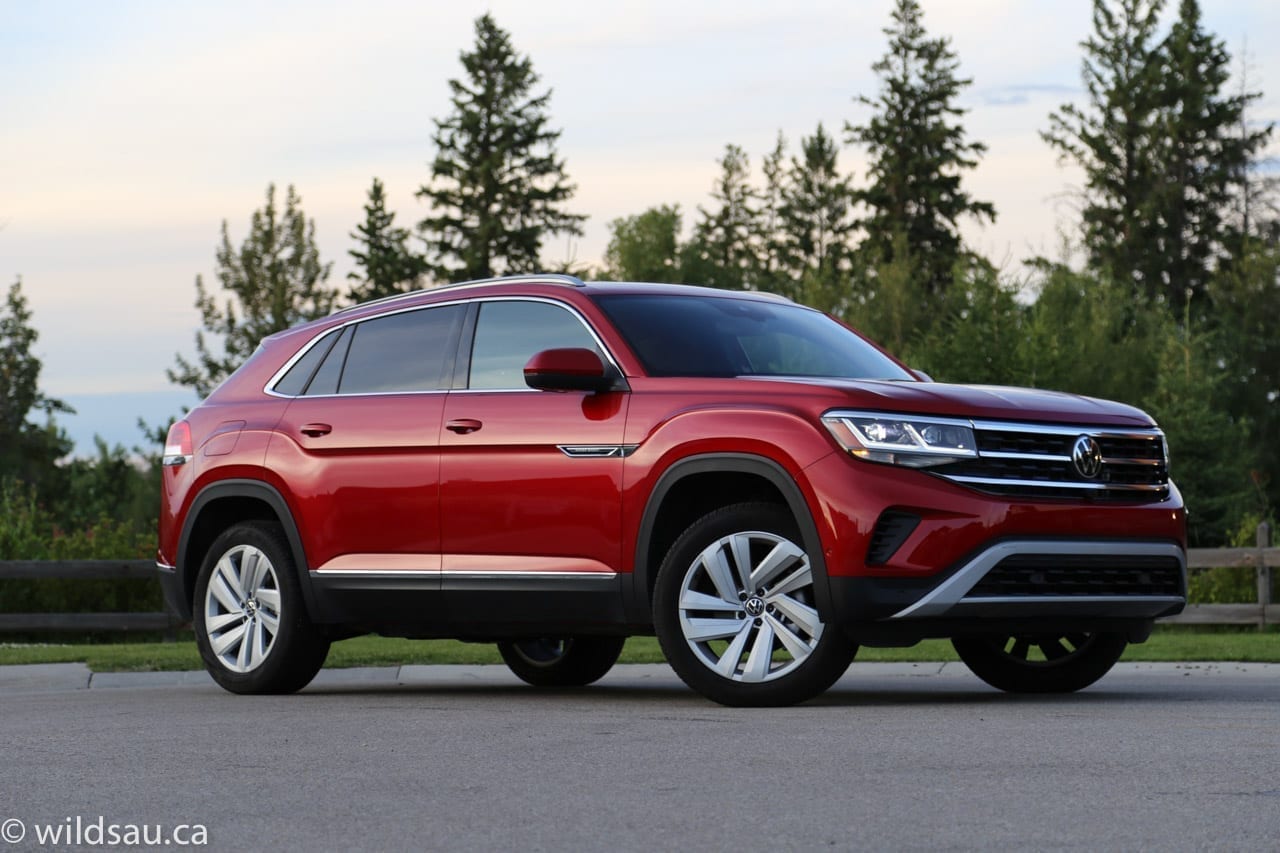
Pricing: 2020 VW Atlas Cross Sport
Base price (3.6FSI Execline trim): $53,395
Options: none
Freight: $1,885
A/C tax: $100
Price as tested: $55,380
The ever popular VW Atlas, which feels like it has saved the brand on our shores, now has a brawny two-row brother – the Cross Sport which is sleeker and bolder than its older sibling.
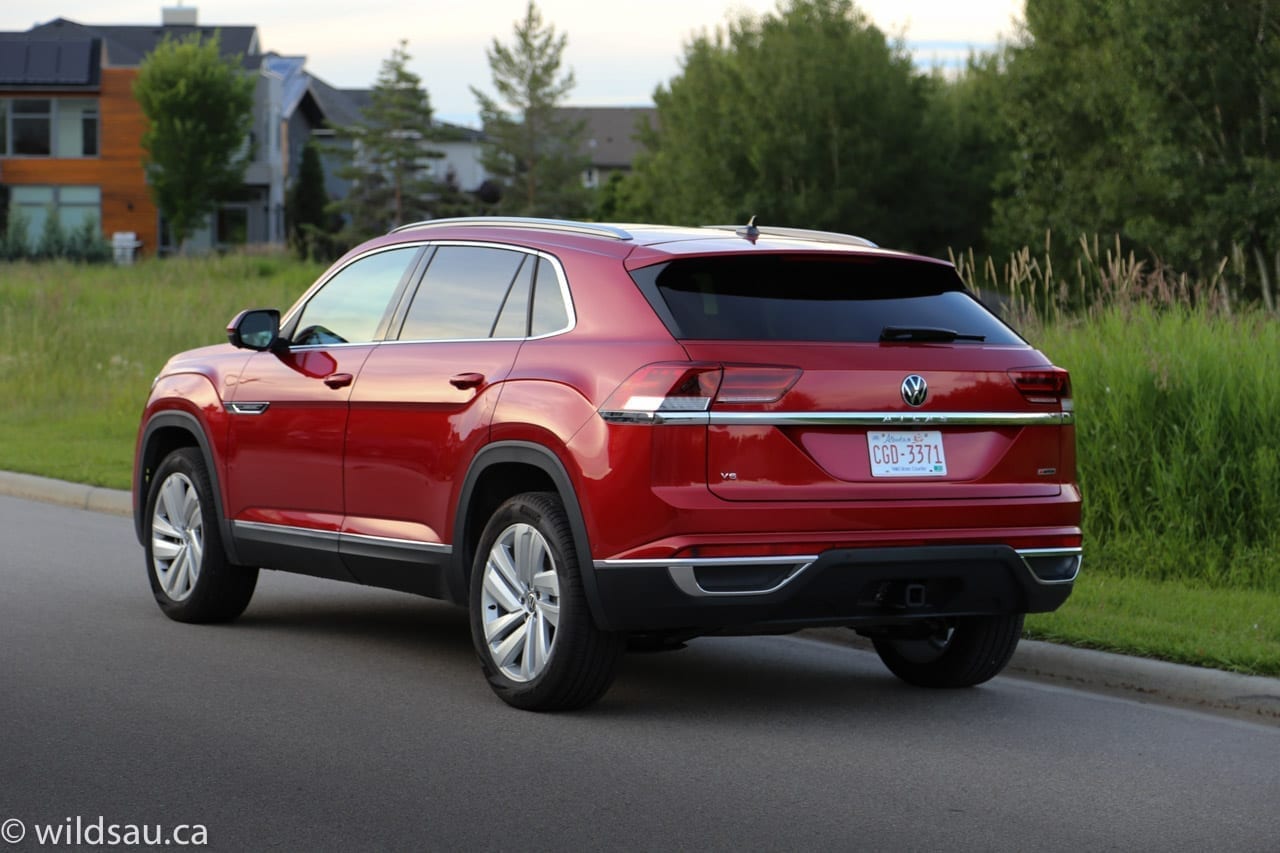
Exterior
My review sample was pretty easy on the eyes, thanks in part to the handsome Aurora Red Chroma paint with fairly liberal use of chrome touches all around.
The Atlas Cross Sport is a large SUV with massive doors and a very wide rear end that accentuates the swoopier “Sport” styling. There is a very pronounced and sharp crease that goes over the wheel wells and all the way down the side of the vehicle – this combined with the power domes on the hood and a generally aggressive front end give off an air of muscular athleticism. Overall it’s a nice shape and in my opinion, a good-looking vehicle, just like the conventional Atlas. The 20-inch rims with massive 255/50-size rubber all the way around are a nice addition too.

All the lighting, front and rear, is LED and the bright headlights are adaptive as well.
As I’ve mentioned before and will continue to until this nonsense stops, I absolutely hate VW’s recent styling that implies there are nifty integrated exhaust tips – except there aren’t any. VW isn’t the lone ranger in this horrible misstep – their sister company Audi is equally guilty, as are other manufacturers as of late. Stop doing this, everyone – it’s insulting. If you’re taking the time to hide the actual exhaust tips, that’s fine. Nobody’s feelings are going to be hurt. But this approach just sucks.
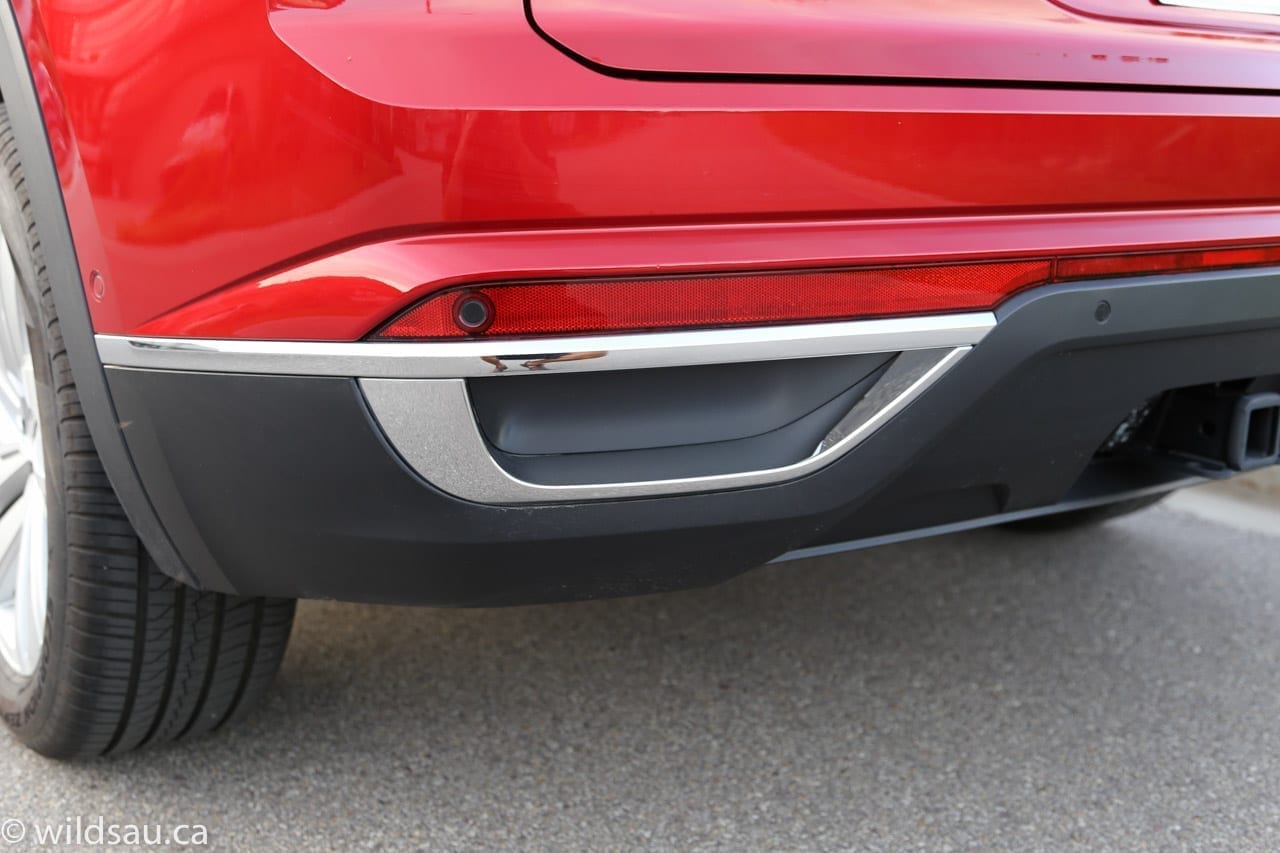
Interior/Tech/Convenience
Those big wide-opening doors mean easy access on all four corners. The cabin is spacious up front, and feels huge. Well, it is huge. We felt the perforated leather seats (heated and ventilated) were very comfortable, even on longer trips – they are clearly designed for broader folks and broader shoulders.
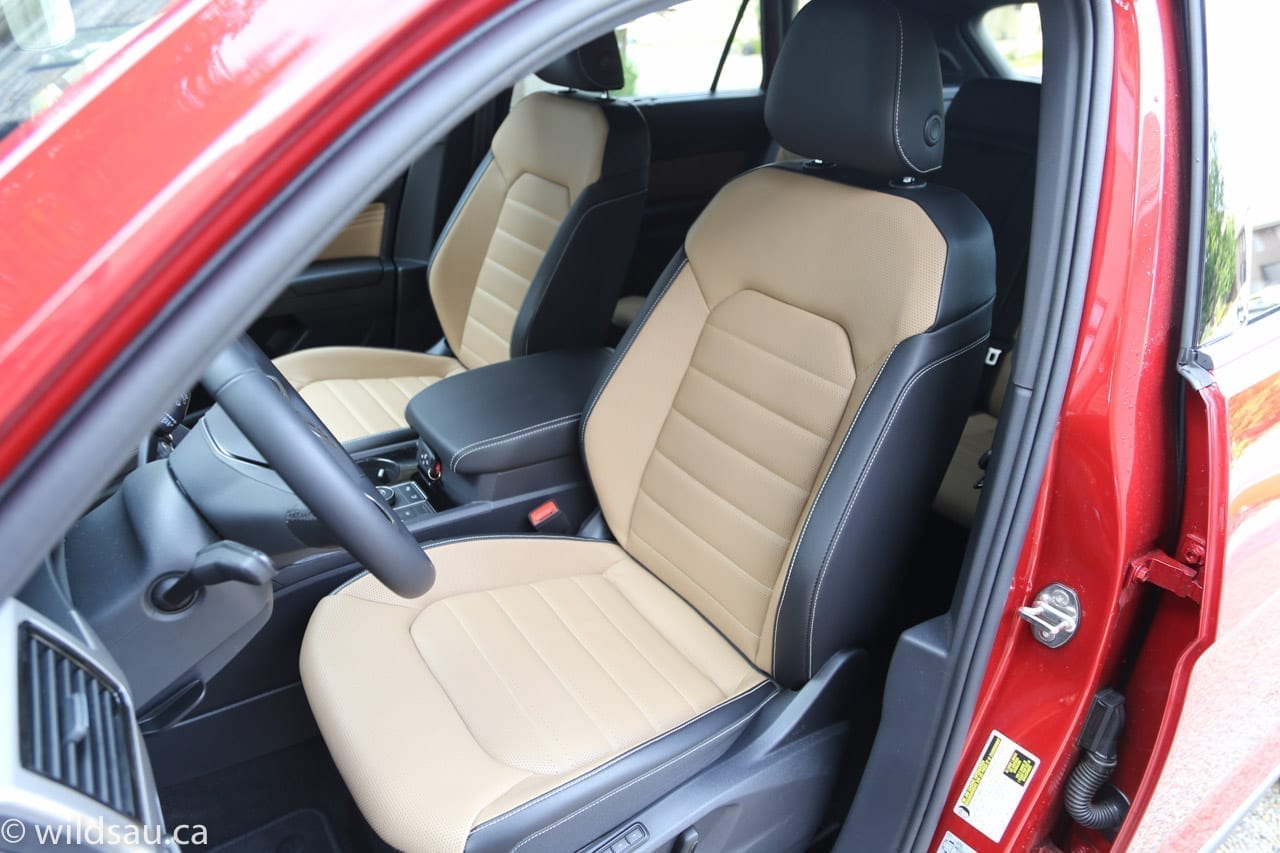
Materials are of decent quality. The two-tone door panels are nicely upholstered but then they’re surrounded by hard plastics, which you’ll find a ton of throughout the cabin, including the entire centre console. The Digital Cockpit replaces traditional gauges – it looks great, is configurable and works very well. I love the road sign detection, as it always shows you the speed limit, upcoming stop signs, etc.
Front and centre is an 8″ touchscreen system that manages your audio, phone, navigation and some vehicle settings. I’ve always enjoyed VW’s proximity sensing system – as soon as you reach for the screen, contextual buttons appear on the bottom of the screen, related to what is happening on the screen.
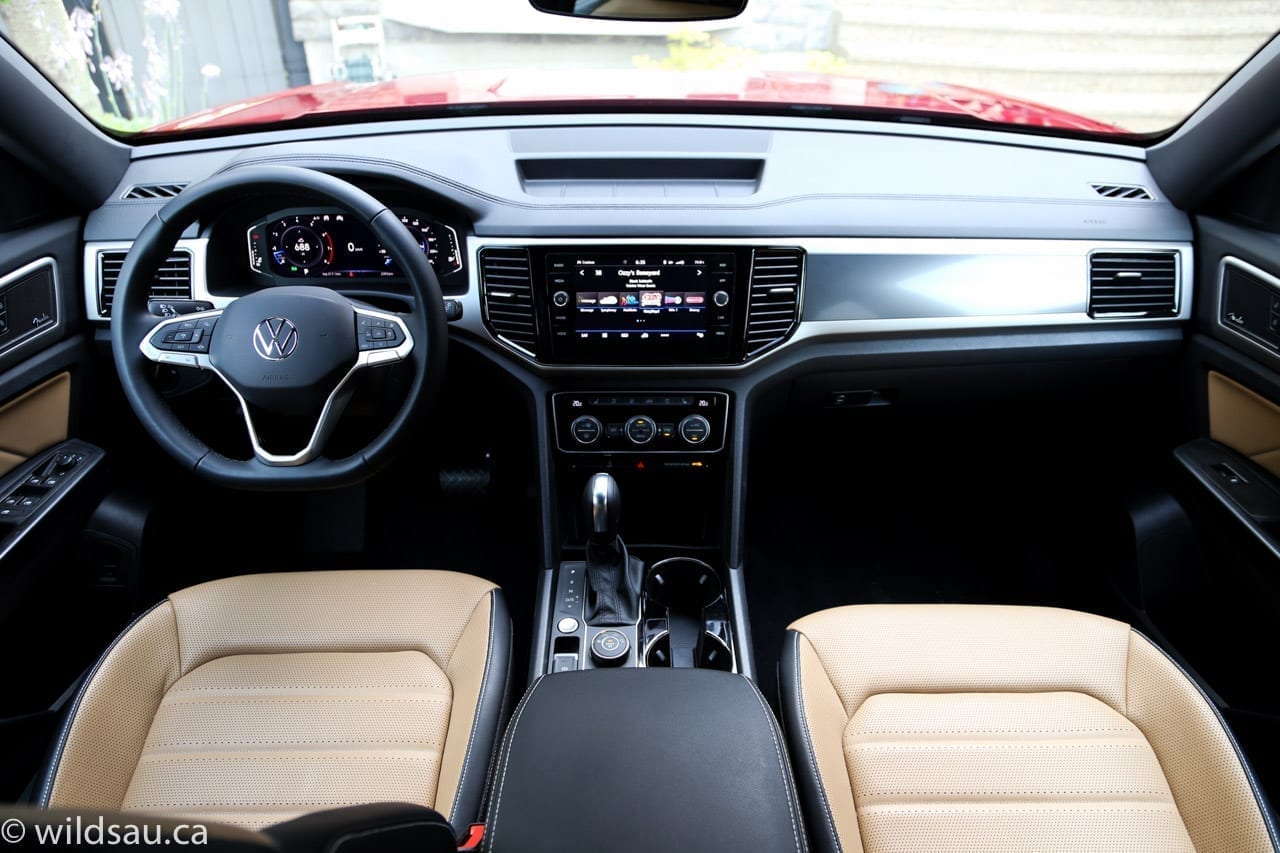
Hilariously for me, the Atlas comes with a CD player – I haven’t owned CDs in over 10 years, but I suppose there are those who will see this as a nice addition. Apple CarPlay and Android Auto are well integrated here and regardless of what source you’re using, the 12 speaker Fender audio system sounds good.
Below the screen is the dual-zone automatic climate control system.
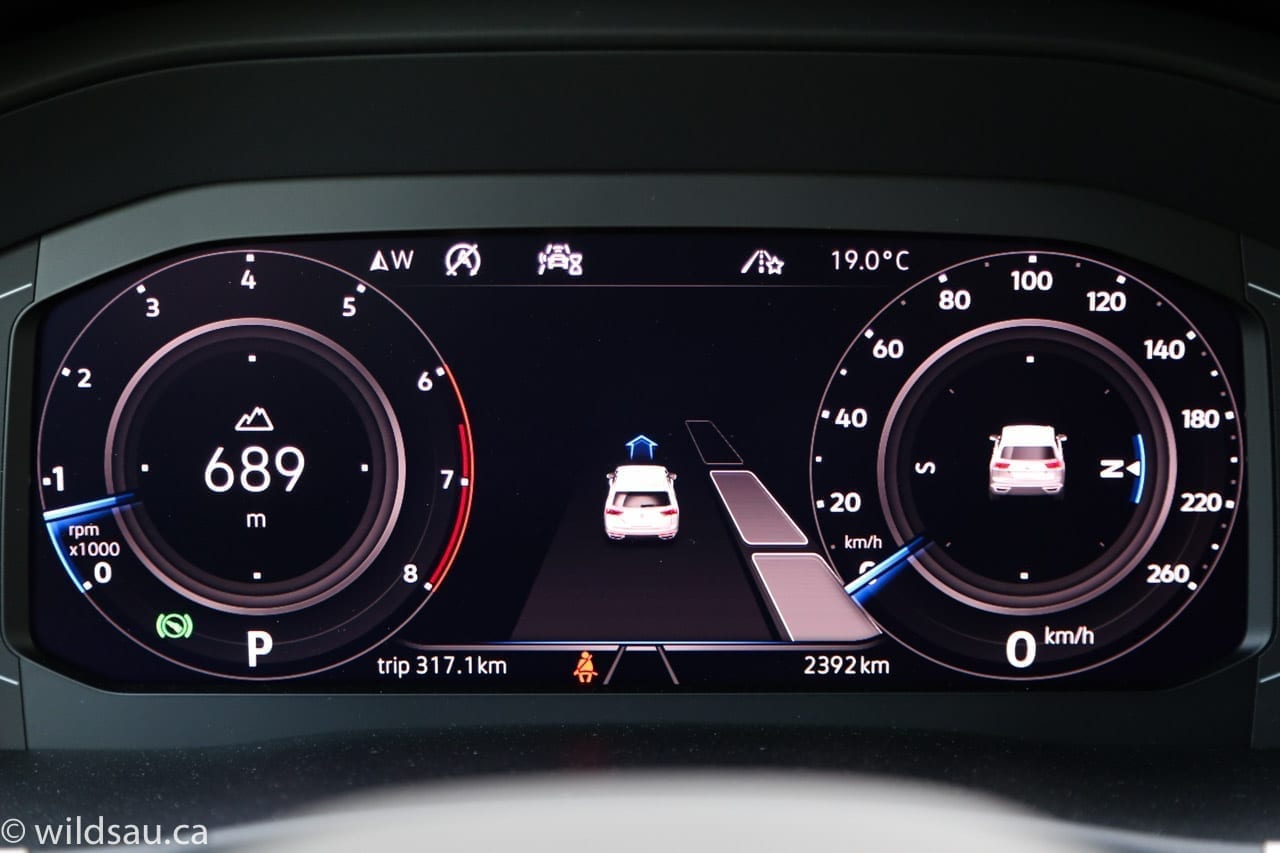
This top trim offers a solid suite of driver assistance technology, including a 360-degree camera with parking distance sensors, park assist, adaptive cruise control with stop-and-go, autonomous emergency braking, blind spot monitoring, rear traffic alert, pedestrian detection, lane assist and automatic high beams.
We enjoyed the convenience of remote start – as useful on a 27ºC day to cool things off for a minute or two as it is during the dead of winter. The panoramic sunroof makes things nice and airy inside, including all the way to the back seats. I was a bit surprised at how narrow the roof is, when you often see them spanning the whole width of the vehicle – not here though.

Rear Seats
Because the Cross Sport does away with the conventional Atlas’ third row, it benefits from more usable space and the legroom in the second row is gargantuan. Unsurprisingly, the headroom isn’t nearly as spacious due to the sloping roofline. Outdoor seating positions are heated and the seats recline, but don’t slide forward and back – they don’t really need to with this much space. Rear passengers get adjustable air vents, manual sunshades over the windows and two USB plugs and a 115V household plug to juice up devices. The middle seatback folds down to become an armrest with cupholders.
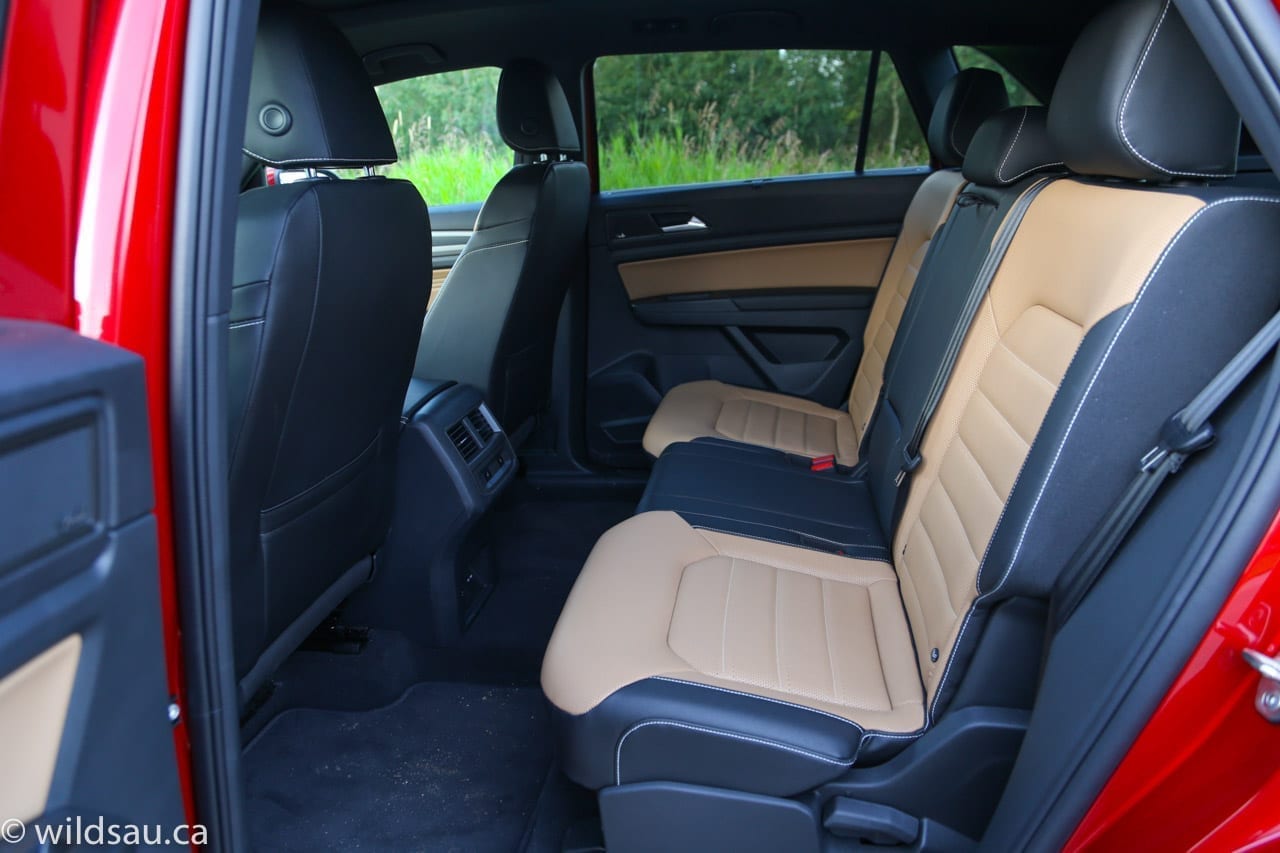
Storage
At the bottom of the centre stack is a slanted open bin with two USB plugs, a 12V plug and an auxiliary port. You also get a far less useful tray in the middle of the dash and a fairly roomy bin under the armrest lid where you’ll find another USB plug. There’s a pop-out bin on the left underside of the dash – it’s completely made of hard plastic so anything in there will rattle around all the time.

Accessing the massive 1,141L trunk is done via the power tailgate – it is a huge cargo space. It’s quite deep with a surprisingly high load floor. If you need to move even more stuff, the rear seats split 60/40 and fold down.
Under the Hood
VW’s familiar 3.6L 6-cylinder, putting out 276 HP and 266 lb.ft of torque, powers the Cross Sport, mated to an 8-speed transmission and the 4-MOTION all-wheel drive system.
Any vehicle this big with a relatively large naturally aspirated engine isn’t going to be a fuel miser, but all that considered, the Atlas is reasonably rated at 14.3/10.7 L/100 km (city/highway). We ended up with an average of 11.6 L/100 km which included a couple of short highway trips.
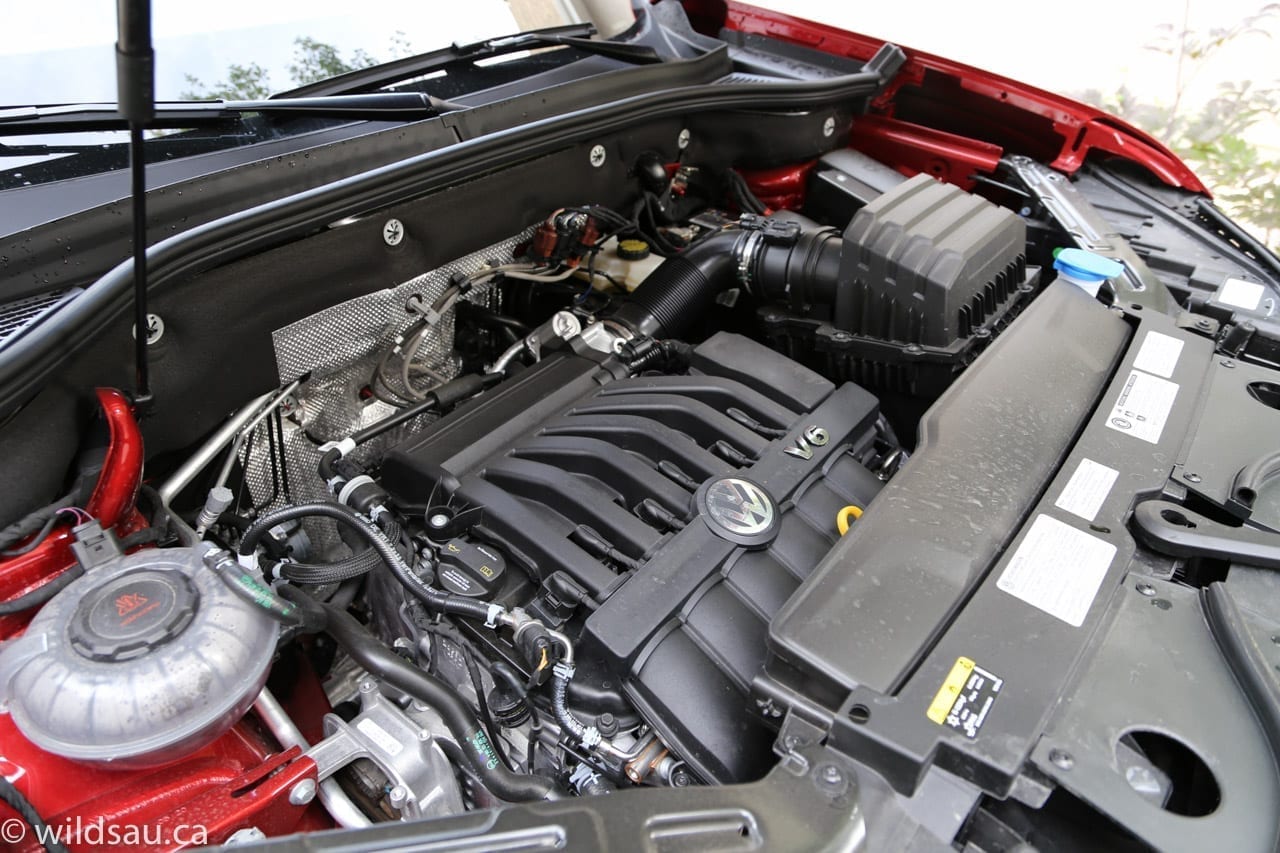
The Drive
The engine and gearing work in concert to give the Cross Sport some real hop off the line, and it surprised me a few times. I found the transmission to be very smooth. While it’s snappy off the line, the engine certainly works harder and feels more strained when you need to get to the power when you’re already moving, which means passing is much more lethargic than taking off from a standstill. The transmission has a Sport mode, and you can also use the gear selector to manually shift gears if that’s your kind of thing.
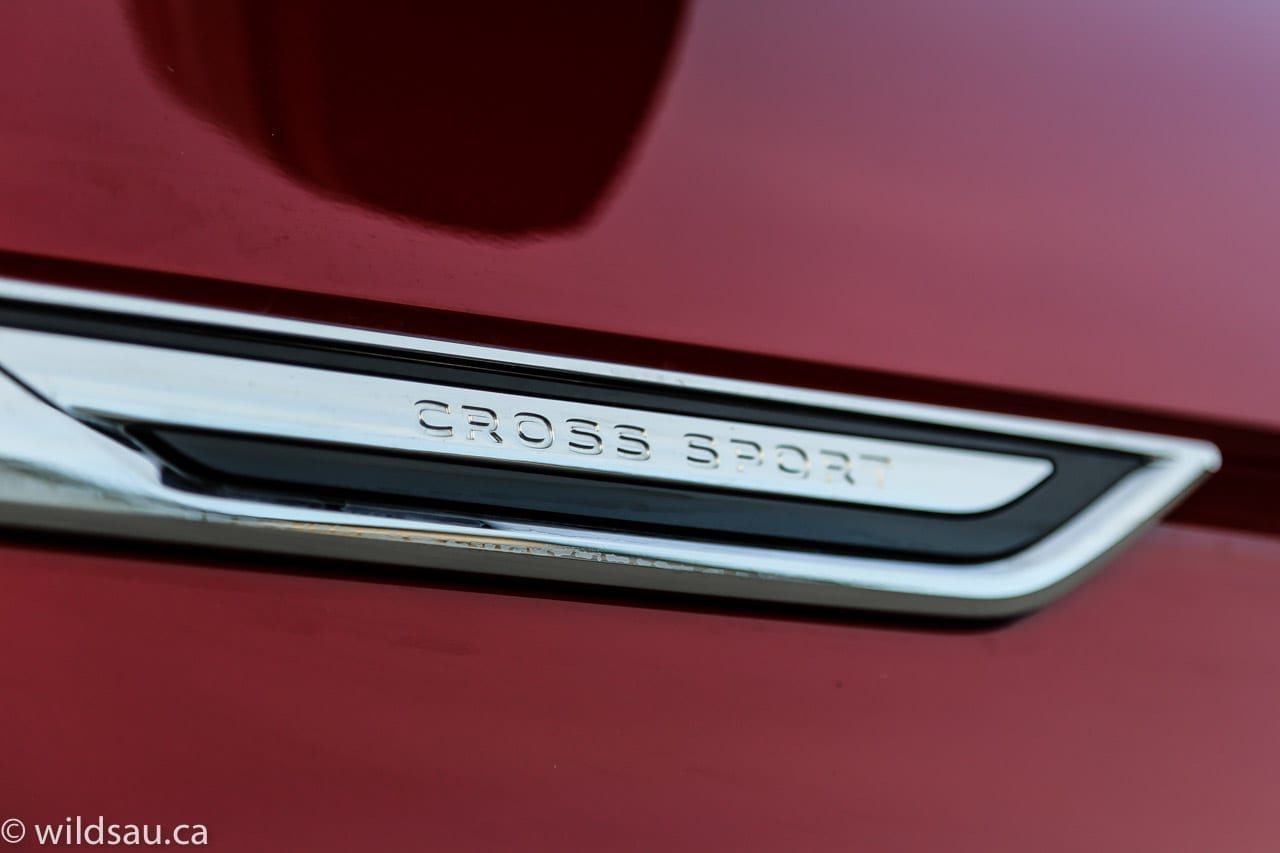
The Driving Profile Selection function allows you to pick between numerous drive modes, including Eco, Normal, Sport and Snow, as well as an Off-Road mode – which you can further individualize to your liking.
The ride is terrific – it’s smooth and comfortable. There is no denying the vehicle’s size and heft, but the handling is actually quite good. It feels competent around corner and will hold its own for sure, and ended up driving smaller than it really is. The one knock against the suspension is that it could be damped better for sound – you can definitely hear road imperfections “whump”ing through to the cabin. Otherwise, road noise is quiet and so is the wind noise – even at highway speeds.
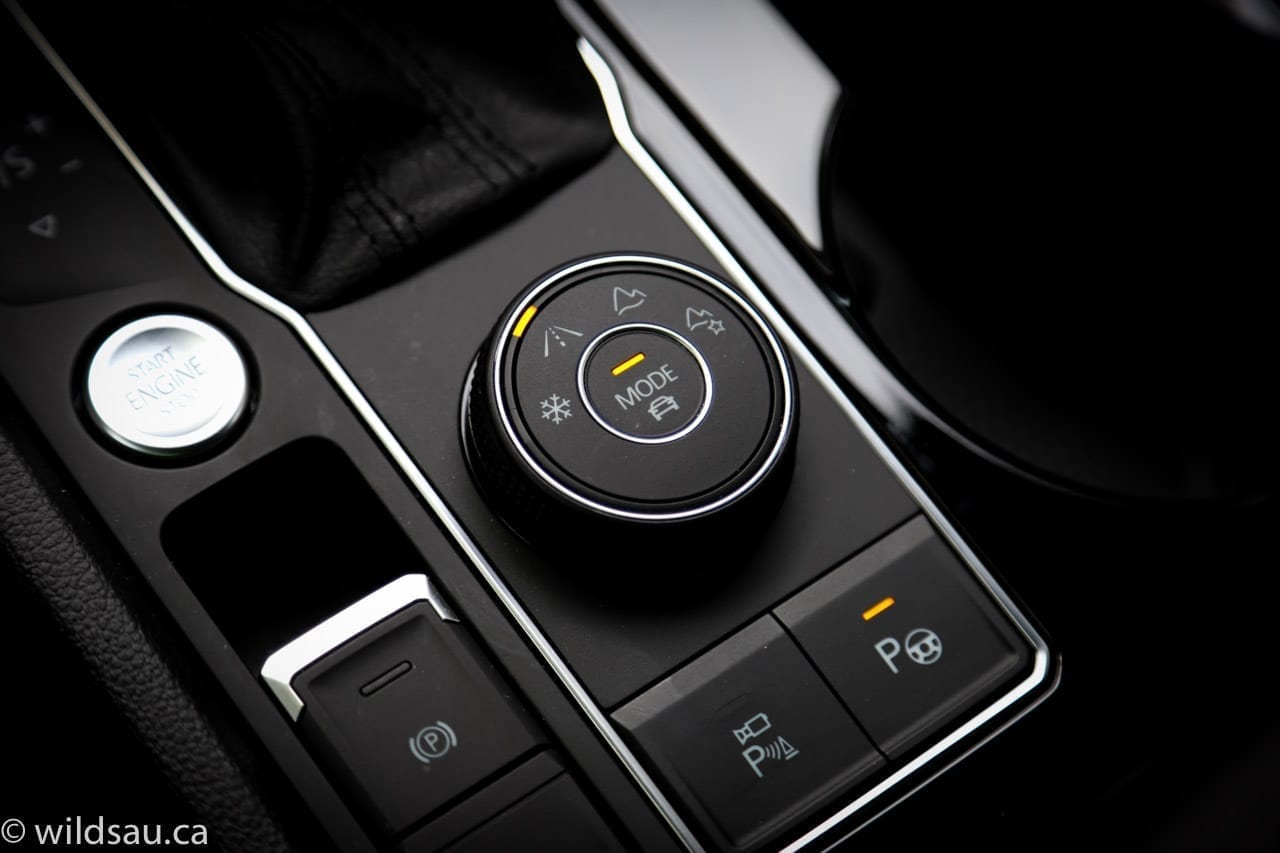
There’s also Hill Descent Control, for all the people that will take their Atlas Cross Sports off-roading. Haha!
The visibility is quite good out of the vehicle – the one slight exception is the rear view which gets a bit compressed due to the roofline.
Should you do towing, the Atlas can lug up to 5,000 pound around.

The Verdict
WAF (Wife Approval Factor) was reasonably high. She didn’t like how huge the vehicle was, particularly when it came to parking. But otherwise she liked the styling, the driving experience and spaciousness.
The Atlas is a decent mid-size SUV alternative and the new Cross Sport is as well, as long as you don’t need that tiny third row. You’re also getting some slightly more avant garde styling.
I liked the looks, the technology and the general all-around performance, as well as the spaciousness throughout the cabin and trunk.
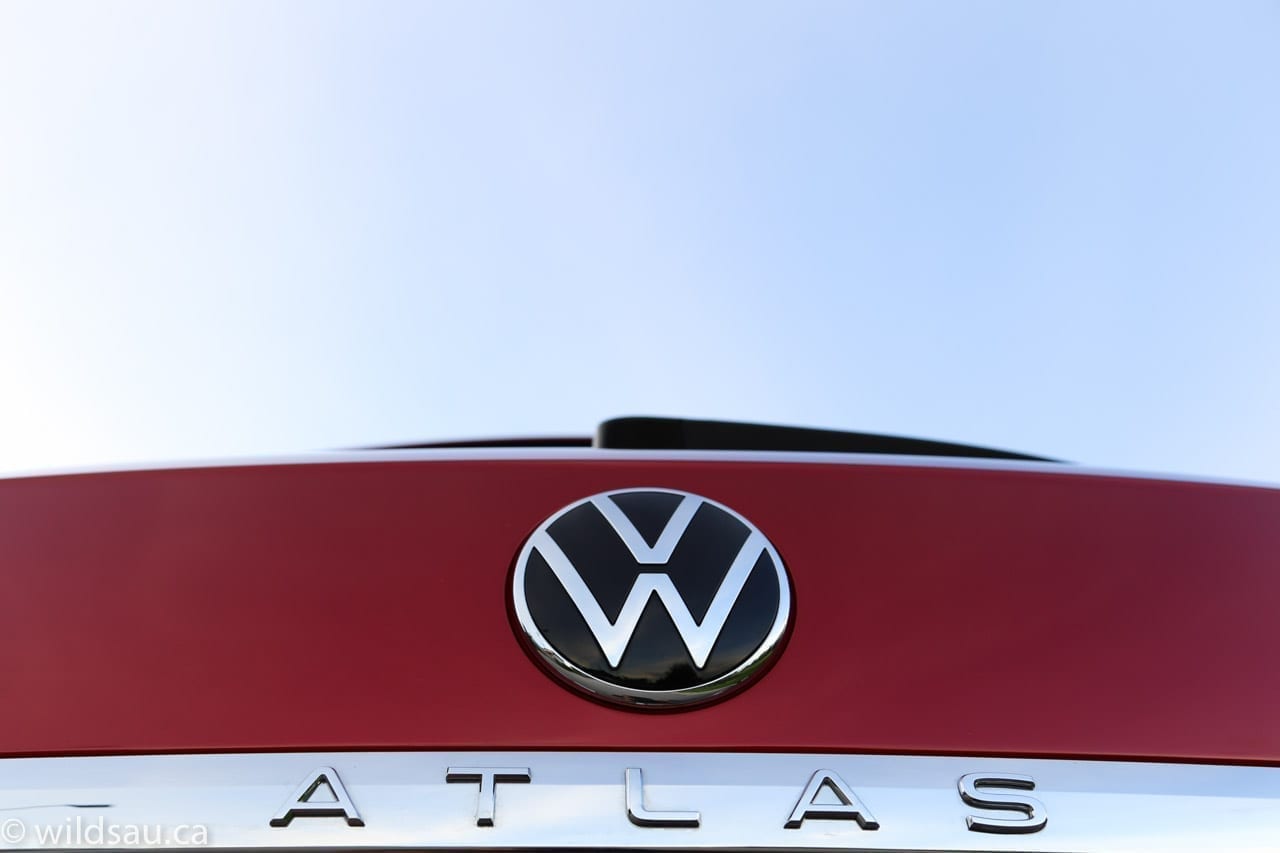
Disclosure: Vehicle was provided by VW Canada.
If you enjoyed this review, feel free to check out my other vehicle reviews under the car reviews tab at the top of my blog.


